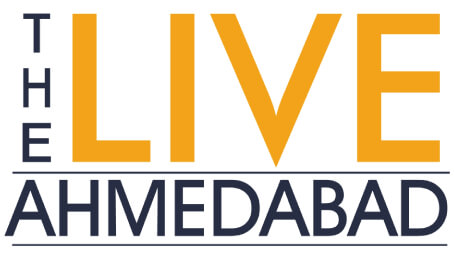Ahmedabad: Balbir Punj has fundamentally gone against RSS boss Mohan Bhagwat’s comprehension of history — Bhagwat has been making a decent attempt to make amiability among Hindus and Muslims. Punj doesn’t have faith in forgetting about the past and says that the job of Islamic trespassers can’t be bypassed. I have a ton of regard for Punj’s grant yet he disregarded my explanation that “genuine decision tip top of all religions has additionally been abusing workers, enjoying pillaging and on occasion for simply political reasons annihilating strict spots’ ‘
There are historical facts that cannot be denied but history is not unidimensional. The RSS chief was right in blaming the British because Sir Henry M. Elliot in his Bibliographical Index to the Historians of Muhammedan India (1850) deliberately presented Muslim rulers as oppressive to justify British takeover, which in his opinion, brought the so-called “full light of European truth, mildness and equity”. How the British destroyed our economy and trade has been admitted even by Punj. Who can deny Dadabhai Naoroji’s thesis about the “drain of wealth”? Unlike the British, Muslim rulers had made India their home.
Let us first talk of temple attacks — Punj has specifically mentioned Somnath. Royal temples were considered as political institutions and were an integral part of the king’s sovereignty and therefore, an attack on them had political and rather than religious motivations. Chalukya king Somesyara III said it in so many words when he himself recorded that enemy’s capital including palaces and temples are to be burnt. Three years prior to the Somnath attack, Chola king Rajendra I in 1022 ordered his army to travel more than 1,500 kms to defeat Pala king Mahipala. The bronze image of Siva was removed from the temple and carried to Thanjavur, the capital of the Cholas. Similarly from Odisha’s Kalinga king, in addition to precious gems, idols of Bhairava, Bhairavi and Kali were forcibly taken. Several Jain temples were similarly plundered in Gujarat by the Parmara kings. King Harsha of Kashmir had institutionalised such a plundering. Indra III of the Rashtrakuta dynasty had demolished the temples of the Pratiharas.
The Somnath expedition was undertaken in 1025. The presiding deity here too was Siva. Mahmood Ghaznavi was indeed a ruthless plunderer who used to attack temples for wealth and that’s why he spared thousands of temples in his 1,600 kms journey to Somnath. Considering such attacks as routine, no Sanskrit source recorded by the local people gave a detailed account of the highly condemnable and absolutely un-Islamic Somnath attack. Life in nearby places remained normal. Sanskrit texts did not mention the religious identity of invaders but called them by their ethnic identity — Turushkas or Turks. Goa’s king who visited Somnath in 1037 did not utter a word about Mahmood’s attack. In 1216, the temple was fortified to save it from the Hindu kings of Malwa.
.
India and settled in Ghazni were permitted to construct their temples. Ghaznavid kings even issued coins which included Siva’s bull Nandi though pictorial representation of living beings is prohibited in Islam.
Moreover, ordinary Muslims were really unhappy with the temple attacks. Accordingly, when Sultan Masood, Mahmood’s son and successor sent a camel loaded with wealth to a mystic saint with a letter that this wealth was acquired by his father in his Indian conquests, the saint returned it by saying he is aware of how these expeditions were made.
Punj must be aware that both Mahmood and Muhammad Ghauri also attacked several Muslim kings. Ghaur’s ruler Bahram Shah in 1150 burned the entire Ghazni city including the library of Ibn Sina and even destroyed mosques. True Ghauri destroyed several Hindu temples as they were considered to be the most visible signs of sovereignty of rulers. But then Ghauri also restored Prithviraj Chauhan’s son to kingship of Ajmer. Similarly, after defeat in 1196, Parihara king of Gwalior and Gahadavala king of Banaras were restored as tributary kings. Solanki king in Gujarat was also restored.
Timur, Nadir Shah and Ahmad Shah Abdali were certainly invaders but they fought wars against India’s Muslim rulers and thus these wars were territorial not religious. Even Babur had captured Delhi by defeating Sultan Ibrahim Lodhi. Nadir Shah has called Indian Muslims as hindooane kalmago — Hindu Muslims. This is what Bhagwat has been saying all along.
The political nature of temple attacks can also be understood by looking at some examples. As a prince Mohammad Bin Tughlaq in 1326 had destroyed the Siva temple at Warrangal, but after becoming sultan in 1329, he ordered repairing of Siva temple at Kalyan as the same was now in his kingdom. Even Aurangzeb supported temples with grants and money. He came down heavily on the state officials who were harassing Brahmins of Banaras. But just like Tughlaq, temples of enemies or those that gave refuge to the rebels of the state or facilitated Shivaji’s escape were destroyed by him.
Coming to conversion, Punj has not cited any authentic contemporary source on his claim of largescale state-sponsored forcible conversion. Nizamuddin Aulia himself had opposed conversion when a Muslim disciple brought his Hindu brother to Nizamuddin in the hope of attaining conversion. In 1317, Nizamuddin refused to even ask a Hindu to convert to Islam. In fact, Sufi saints had great respect for the Hindu religious beliefs. Nizamuddin was one day walking along the bank of the Yamuna in Delhi with Amir Khusro, they saw some Hindu women bathing in the river and offering prayers to the sun, Nizamuddin said, “O, Khusro, these women are also praying to Allah. They have their own way of praying.” Shahjahan in 1634 issued a formal decree about Madan Mohan temple in Brindavan and termed Hindu worship as Ibadate Ilahi (divine worship). Both Akbar and Jahangir too had opposed conversions. Thomas Coryat, a British who spent two years at Jahangir’s court, says that the emperor had a dislike for the change of religion.
Muslims even adopted several Hindu customs including jauhar. In 1301, Muhammad Shah, a former ethnic Mongol convert to Islam, killed his entire family when Alauddin Khalji was about to capture Ranthambhor fort. In 1617, one Qasim Khan, who had been governor of Bengal, too preferred jauhar to the capture of women.
Imposition of discriminatory jazia was an exception rather than the rule and it was rarely collected except in the last decades of Aurangzeb’s rule, basically to support wars in the south and to please religious fanatics. It was an exemption from the military service and was imposed on the able bodied men. Hindus who served in the imperial army were exempt. Surprisingly, tax officials once reached Nizamuddin to collect jazia.
Systematic religious persecution in modern sense did not take place. Akbar banned not only killing of cows but even peacocks. No one was executed for blasphemy. When a Brahmin was sentenced to death by a kazi, the emperor became angry and sent the judge to exile in Mecca. Muslim rulers married Hindu women. Mothers of Jahangir and Shahjahan were Hindus. Syed Ali Nadeem Rizvi says Hindu and Muslim nobles used to live together with their havelis in the close proximity to Agra fort and Holi and Muharram were celebrated together. Even Hindus used to go to Muslim schools. Thus Balkrishnan Brahman during Shahjahan was sent to maktab of Abdul Majid in Hisar. Similarly Muslims used to go Hindu schools in Banaras, Thatta and Multan. Hindu and Muslim merchants used to jointly own the cargo and cargo-loaded boats in Surat and in 1666, they even jointly protested against the kazi.
Punj has belittled the Hindu representation in Mughal nobility by comparing it with the recruitment of Indians by the British. But he failed to appreciate that while not many Englishmen were available in India, huge number of Muslims were at the disposal of Muslim rulers. Is it not surprising that Mughal emperor Babur in 1526 was surprised to see that all the revenue officers were Hindus in spite of 300 years of Muslim rule?
Indeed, Muslim rulers did many things that by modern norms were absolutely wrong. But should we judge medieval rulers by today’s standards particularly when we refuse to judge today’s democratic governments by the mandate of our Constitution and its liberal and enlightened vision?



